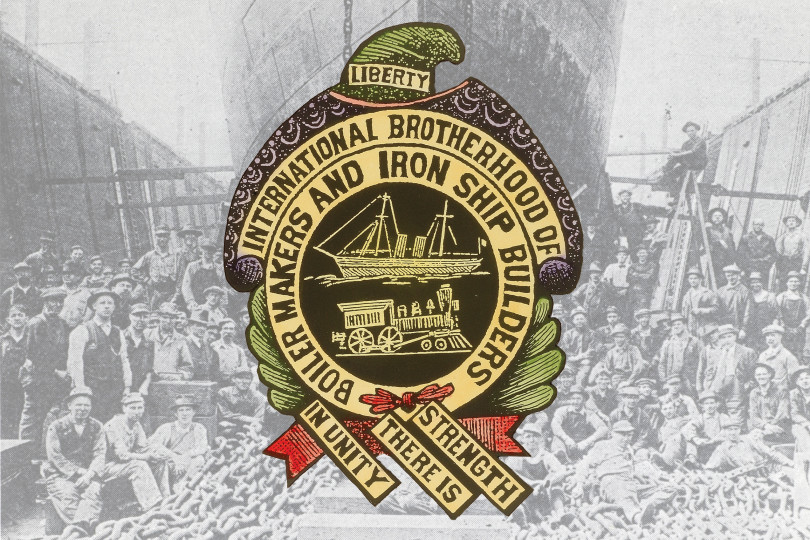The International Brotherhood of Boilermakers, Iron Ship Builders, Blacksmiths, Forgers, and Helpers has a rich and storied history that dates back over a century. Its formation in the late 19th Century marked a pivotal moment in the American labor movement, as skilled workers in the metal trades joined together to protect their rights and advance their interests.
The roots of the Boilermakers can be traced back to the late 1800s when industrialization was in full swing, and the demand for skilled metalworkers was on the rise. Workers in this field faced dangerous working conditions, long hours and low pay. Their dire circumstances pushed them to band together and form a union to address their grievances.
In 1880, a group of Boilermakers in Chicago took the first steps towards organizing the union from all the smaller local groups of Boilermakers around North America. Their initial efforts were modest, but they laid the foundation for the future of the organization. These workers realized that by joining forces, they could collectively negotiate for better wages, improved working conditions and other benefits that were virtually non-existent in the harsh industrial landscape of the time.
The year 1880 saw the establishment of the International Brotherhood of Boilermakers and Iron Ship Builders of America. This early version of the union was relatively small but symbolized the growing spirit of worker solidarity that was sweeping across the nation.
However, it wasn't until 1893 that the union truly began to take shape. The pivotal moment came with the founding convention held in Chicago, where delegates from across the United States and Canada gathered to formalize the union’s structure and objectives. At this convention, the union adopted a constitution and bylaws, and they elected their first General President, John Johnston.
Johnston was instrumental in shaping the direction of the Boilermakers. Under his leadership, the organization worked to strengthen the rights of its members and improve their working conditions. In 1951, at the Blacksmith’s 18th convention, they approved the merger with the Boilermakers, recognizing the common interests and challenges faced by workers in these related trades. It wasn’t until the Boilermakers’ 19th consolidated convention in 1953 that members approved the merger because the Boilermakers’ Constitution did not allow mergers to be completed by the Executive Council.
Throughout the late 19th and early 20th centuries, the union played a vital role in negotiating fair wages, reasonable hours and safer working conditions for its members. The union also established an apprenticeship program to ensure the continuity of skilled trades in an ever-changing industrial landscape.
The union remains vitally important in the present day as the world moves towards a clean energy future. Boilermakers play a crucial role in advancing a clean energy future by applying specialized skills to various industries and projects that are essential for reducing carbon emissions and transitioning to more sustainable energy sources. Those include renewable energy infrastructure, nuclear energy and SMRs, carbon capture and additional upgrades to reduce noxious emissions, biomass, energy storage solutions and hydroelectric power.
Over the last century, the Boilermakers union evolved as times changed, and they’ll continue to evolve over the next 100 years.






